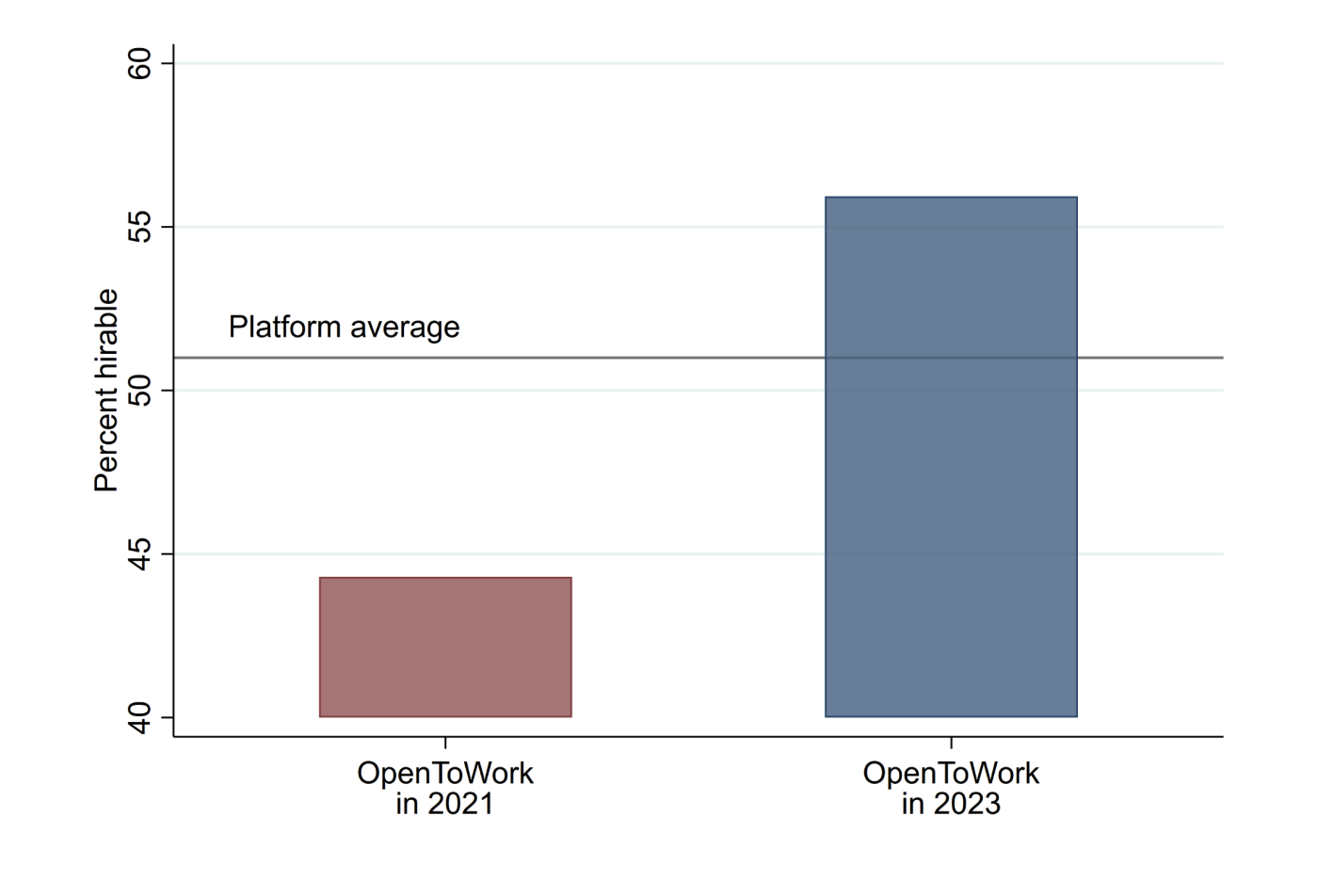Job seekers face a dilemma when choosing whether to mark themselves as #OpenToWork on LinkedIn.
On one hand, it sends a clear and useful signal to recruiters. On the other hand, the badge can lump you with a crowd of people who are more likely to be unemployed or unhappy with their jobs, which could be seen as a negative sign — you know, a version of the quote often attributed to Groucho Marx: I don’t want to belong to any club that would accept me as a member.
If you’re a software engineer who’s on the market, should you list yourself as #OpenToWork? Does doing so send a negative signal? And with the recent deluge of layoffs at tech companies, has the meaning of #OpenToWork changed? We decided to find out.
We aggregated pass/fail rates from mock and real interviews and cross-referenced them with whether users marked themselves as #OpenToWork on their LinkedIns.
The setup
Our site interviewing.io is an interview practice platform and a tech recruiting marketplace. Engineers use us for mock interviews and companies use us to hire top performers. In our lifetime, we’ve hosted over 100,000 technical interviews, split between mocks and real ones. To test whether listing yourself as #OpenToWork is a good thing to do, we aggregated pass/fail rates in the interviews our users did and cross-referenced them with whether users marked themselves as #OpenToWork on their LinkedIns. We also made sure to check their LinkedIns twice: once in early 2021, when there were practically no tech layoffs, and again in early 2023, in the wake of the worst round of tech layoffs since 2001.
Why did we check twice? Economic theory suggests that the people laid off or searching for a job in boom times are different from those laid off in a recession. If you are let go or cannot find a job when companies are flush, it might be that you were laid off for performance reasons or can never get past a screening call. On the other hand, someone who suffered from an across-the-board layoff in a time of economic crisis could be perfectly capable, just a casualty of macroeconomic forces.
We found that being #OpenToWork is far more common now. Among the over 10,000 people that we had LinkedIn data for, only 1.4% had the badge in 2021 compared to 4.2% in the first quarter of 2023.
The results
How do these two cohorts of #OpenToWork engineers perform?
We found that being #OpenToWork was a negative signal for those who had it up in 2021, a boom time for tech hiring. The chart below shows the percentage of people who passed their interviews — our summary measure of candidate performance. On average, about 51 percent of candidates pass their interviews. In contrast, those with #OpenToWork badges in 2021 were fully 7 percentage points below that, at 44%.

Image Credits: Aline Lerner/Maxim Massenkoff
The finding confirms that there can be negative selection among job seekers. Being upfront about looking for a job — at least in 2021 — was indeed a bad sign.
But strikingly, this result flips in present times. Engineers who are currently #OpenToWork are actually positively selected relative to everyone else. Listing yourself as #OpenToWork is a good sign in these rough times: Fifty-six percent of engineers tagged as #OpenToWork passed their interviews, five percentage points more than average. The difference in these effects is highly statistically significant. And we get the same results when we leave out anyone who has worked at a FAANG company — in case the recent layoffs simply flooded the market with engineers from those top-tier companies.
Conclusion
Anecdotally, we’ve heard that layoffs in 2022 and 2023, especially at large companies, were not performance based. In many cases, the people who were hired last were the first on the chopping block. In some cases, entire teams were cut — if a team’s product wasn’t close enough to revenue, they ended up on the chopping block, independently of how strong the engineers on that team actually were.
We were excited to see that this anecdotal perception held up in the data.
That said, people who are #OpenToWork have not necessarily been laid off. In uncertain times, it’s more common for workers to be openly searching for jobs. The macroeconomic forces could normalize a more aggressive on-the-job search, which might also pull more talented — but still employed — people into checking #OpenToWork.
Regardless of layoff composition, in boom times openly searching for a job can be a negative signal. But during downturns, the rules change, and openly looking for work becomes much more “normal.”
The signal to managers is clear: Right now, good workers are out there looking for jobs. The #OpenToWork tag should no longer send a negative signal. While hiring has slowed across many tech companies, those with the budget will find a better pool to choose from, and those who were laid off in late 2022/early 2023 might be among the most impressive candidates.
If you’re a candidate, though we wouldn’t go as far as recommending that you list yourself as #OpenToWork, because of potential residual bias associated with that tag, we would encourage you to feel no shame about having been impacted by layoffs.
The data is clear, after all — the pool of engineering job seekers has never been more talented.
